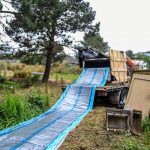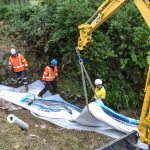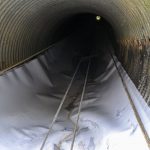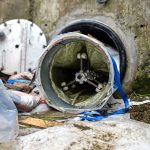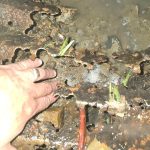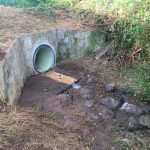Keeping everyone happy – Brandenburger UV Liners’ secret
Working on tight sites in built-up residential areas is meat and drink to experienced Australasian operators TDG Environmental.
But when remediation of an aging stormwater culvert is going under one house, and very close to others, the stakes are a bit higher. Not to mention the issue of difficult access through native bush and operating on a steep slope.
No problem.
TDG Environmental Senior Project Manager, Andrew Twentyman, says the existing , culvert – all 84 metres of it – wasn’t in great condition. In fact, the corrugated iron it was made from was literally flaking away. He says the construction was two half-pipes joined together. “It was pretty basic in the first place, and it’s condition was fairly bad.”
Andrew said a trenchless (keyhole) solution made a lot of sense. Brandenburger UV Liners from BurrowTech were chosen for the job.
“Access was our biggest issue. It was a tricky site.” He says the ease of being able to move the Brandenburger UV Liner was key, it was flexible, durable and easier to handle than most of the alternatives. “Other liners can be heavier and stiffer.”
“The Brandenburger UV liner took really nicely to the shape of the deteriorating original pipe. In the end, it looked better than expected.”
He says the whole process was relatively quiet and unobtrusive, and comments from residents were positive. “Feedback said they appreciated the respect we showed for their properties. They were really happy.”
Hayden Powell from BurrowTech says the 1,000mm Brandenburger UV Liner had the advantages of not wrinkling or creasing and creating a secure pipe-within-pipe no matter the original pipe’s imperfections. “Using the UV-cured, resin-impregnated glass-fibre, you don’t lose capacity. And it’ll last another 50-100 years, easy.”
Hayden says the liner’s robustness was vital, as it needed to be dragged 20m before being winched through the culvert, all with minimum disruption to the neighbourhood. “It’s another example of where trenchless is a great solution. Great work TDG Environmental!”
He says trenchless systems reduce emissions by approximately 80 to 85%, compared to a trenched approach with excavated materials, additional equipment use, and transport needs. With UV this is cut to almost zero.
